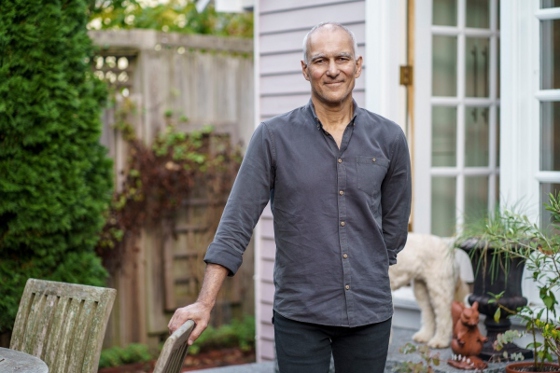 |
| October 31, 2023 | Volume 19 Issue 41 |
Designfax weekly eMagazine
Archives
Partners
Manufacturing Center
Product Spotlight
Modern Applications News
Metalworking Ideas For
Today's Job Shops
Tooling and Production
Strategies for large
metalworking plants
Kudos: Army-funded scientists win Nobel Prizes
Two Army-funded scientists have each won a 2023 Nobel Prize in separate categories for their research that has potential use in advanced sensors, secure communications, and enhanced imaging.
Professor Ferenc Krausz won the Nobel Prize in Physics for his work in attosecond lasers, which was expanded in scope with the support of the U.S. Army Combat Capabilities Development Command Army Research Laboratory (ARL). Professor Moungi Bawendi, a researcher with the Army's Institute for Soldier Nanotechnologies, won the Nobel Prize in Chemistry for his work on techniques to generate quantum dots of uniform size and color.
With a modest Short-Term Innovative Research grant from ARL's Army Research Office in 2015, Krausz, a researcher at the Max Planck Institute of Quantum Optics in Germany, conducted research on attosecond lasers that provided fundamental insights into the behavior of electrons in atoms, molecules, and solids.

Professor Ferenc Krausz won the Nobel Prize in Physics for his work in attosecond lasers, which was initially funded by ARL. [Credit: Photo courtesy of the Max Planck Institute of Quantum Optics]
An attosecond is one-quintillionth of a second, making attosecond lasers capable of generating extremely brief bursts of light, which is essential for studying and manipulating ultrafast processes at the atomic and subatomic levels.
Krausz won the prize along with two colleagues, Professor Pierre Agostini at The Ohio State University and Professor Anne L'Huillier at Lund University in Sweden. Their research demonstrated that these extremely short pulses could be used to track the movement of individual electrons.
The ability to understand and control ultrafast processes could lead to the development of advanced sensors for detecting chemical and biological agents, explosives, and other threats. It also could result in the design of new materials and enhance quantum technologies for secure communications and quantum computing.
"This prestigious award underscores the critical role of DEVCOM ARL's extramural initiatives in recognizing and supporting world-leading research at its inception," said Dr. Barton H. Halpern, Army Research Office director, ARL. "Congratulations to Dr. Krausz on this tremendous achievement."

Professor Moungi Bawendi, a researcher with the Army's Institute for Soldier Nanotechnologies, managed by ARL, won the Nobel Prize in Chemistry for his work on techniques to generate quantum dots of uniform size and color. [Credit: Photo courtesy Jodi Hilton, MIT]
Bawendi, an ISN principal investigator and member of the faculty at the Massachusetts Institute of Technology (MIT), shares the prize with Louis Brus of Columbia University and Alexei Ekimov of Nanocrystals Technology, Inc. The researchers were honored for their work discovering and synthesizing quantum dots, tiny particles of matter that emit exceptionally pure light.
The team revolutionized the chemical production of quantum dots, resulting in almost perfect particles.
Quantum dots are governed in part by the laws of quantum mechanics that describe how atoms and subatomic particles behave. When illuminated with ultraviolet light, the dots fluoresce brightly in a range of colors determined by the sizes of the particles.
Quantum dots are now used in many types of biomedical imaging, as well as computer and television displays, and they also hold potential in fields such as photocatalysis and quantum physics.
Scientists are now exploring applications that include imaging technologies, advanced energy storage devices, quantum computing, and nanomaterials with unique properties.
In recent years, Bawendi's lab has also developed quantum dot-based spectrometers that are small enough to fit inside a smartphone camera. Such devices could be used to diagnose diseases, especially skin conditions, or to detect environmental pollutants.
Bawendi has been a member of the ISN faculty at MIT since its founding in 2002. It was through the ISN that he received his first Army funding and began research to address Soldier needs. The U.S. Army established the ISN as an interdisciplinary research center to dramatically improve protection, survivability, and mission capabilities of the Soldier and of Soldier-supporting platforms and systems.
"For more than 20 years, through the ISN, the U.S. Army, DEVCOM ARL, and its Army Research Office have helped to fund many of the achievements that led to this most prestigious award," Halpern said. "We're proud to have been a small part of this tremendous success. Congratulations to Dr. Bawendi on this outstanding recognition."
In its more than 70-year history, Army Research Office-funded projects have resulted in 26 researchers becoming Nobel Laureates.
Source: U.S. Army DEVCOM Army Research Laboratory
Published October 2023
Rate this article
View our terms of use and privacy policy
